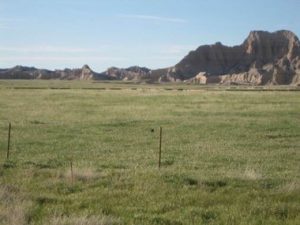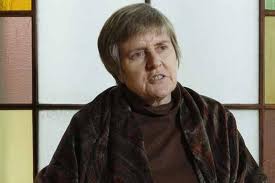Mary Tobacco & I have a Dad-and-Daughter 50 year kinship; once a day or more we call in and ask each other: “tell me a good story;” some stories are hard; some playful and delicious — e.g., like Baby Marvin, a daring toddler who sometimes likes to roll around as Dakota dust turns toward Dakota mud. Our little family also opens us to my university world of work, from which I often write a post.
On our campus as people in the university world, like people everywhere, suck air, walk too fast, and try to manage big and little start-ups. Lots of people scramble in their digital workplaces, not just on campuses. Maybe that’s why the Kathleen Norris memoir suggested itself during this year’s season of hope and anxious attention to county-by-county digital maps showing percentages of fully or partially vaccinated human beings who have themselves kept vigil with our numbing hosts of the beloved dead.
Norris writes words that open deep into ordinary reality. In 1974, after learning her way into New York City’s world of poetry with mentoring from the legendary Betty Kray at the Academy of American Poets (http://www.nytimes.com/1987/11/24/obituaries/elizabeth-kray-patron-and-friend-of-poets-and-their-art-dies-at-71.html) Kathleen and her husband shocked their peers by moving to Lemmon in northwestern South Dakota where Kathleen had inherited the family home of her grandmother. They stayed a long time.
In 1993, her Dakota: A Spiritual Geography took the literary world by storm. Took me by storm too. If a book of micro essays, some only half a page, ever approaches the taut, lean focus of strong poetry, for me this is the book. In those South Dakota years, she became friends with vast horizons, and with the Benedictine monks at St. John’s Monastery in Minnesota. She’s written several memoirs about the intersection of her secularity with the roots of Benedictine prayer and wisdom.
Think of the following short quotes from Dakota as poems. Best to read them out loud, with pauses.
Have a blest day,
john sj
Today’s Post: Four texts from Dakota
“Once, when I was describing to a friend from Syracuse, New York, a place on the plains that I love, a ridge above a glacial moraine with a view of almost fifty miles, she asked, “But what is there to see?” The answer, of course, is nothing. Land, sky, and the ever-changing light.”
“Maybe the desert wisdom of the Dakotas can teach us to love anyway, to love what is dying, in the face of death, and not pretend that things are other than they are. The irony and wonder of all of this is that it is the desert’s grimness, its stillness and isolation, that brings us back to love.”
“To be an American is to move on, as if we could outrun change. To attach oneself to place is to surrender to it, and suffer with it.”
“For me, walking in a hard Dakota wind can be like staring at the ocean: humbled before its immensity, I also have a sense of being at home on this planet, my blood so like the sea in chemical composition, my every cell partaking of air. I live about as far from the sea as is possible in North America, yet I walk in a turbulent ocean. Maybe that child was right when he told me that the world is upside-down here, and this is where angels drown.”
meadowlark on a fence, Fog Basin, SD 2008
A recording of the song of the Western Meadowlark
Kathleen Norris (born in Washington, D.C. on July 27, 1947) is a best-selling poet and essayist. Her parents, John Norris and Lois Totten, took her as a child to Hawaii, where she graduated from Punahou Preparatory School in 1965. After graduating from Bennington College in Vermont in 1969, Norris became arts administrator of the Academy of American Poets, and published her first book of poetry two years later.[1] In 1974 she inherited her grandparents’ farm in Lemmon, South Dakota, moved there with her husband David Dwyer, joined Spencer Memorial Presbyterian church, and discovered the spirituality of the Great Plains.[2] She entered a new, non-fictional phase in her literary career after becoming a Benedictine oblate at Assumption Abbey ND in 1986, and spending extended periods at Saint John’s Abbey in Collegeville, Minnesota.[3] Since the death of her husband in 2003, Norris has transferred her place of residence to Hawaii


